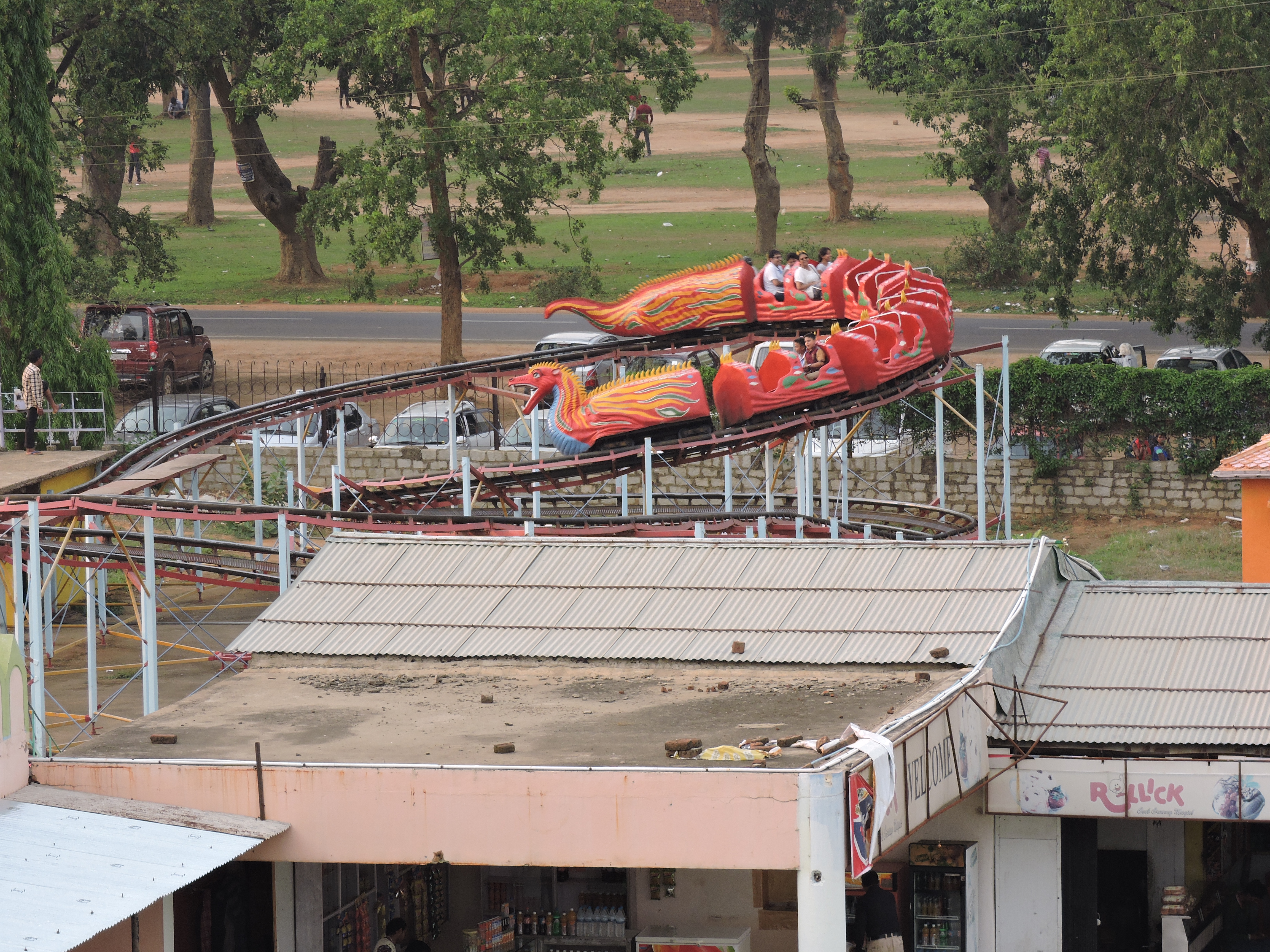| Revision as of 02:40, 11 February 2003 editRidetheory (talk | contribs)231 edits added roller coaster image← Previous edit | Revision as of 18:00, 1 May 2003 edit undoKwertii (talk | contribs)Autopatrolled, Extended confirmed users4,806 editsm KennywoodNext edit → | ||
| Line 5: | Line 5: | ||
| The roller coaster itself potentially consists of a track that rises and falls in specially designed patterns; loops that allow the rider to briefly be upside down; and the car itself, in which the passengers ride. All passengers, using modern safety technology, MUST be secured safely into the roller coaster car. Roller coasters in all parks are subject to stringent safety precautions and inspections. | The roller coaster itself potentially consists of a track that rises and falls in specially designed patterns; loops that allow the rider to briefly be upside down; and the car itself, in which the passengers ride. All passengers, using modern safety technology, MUST be secured safely into the roller coaster car. Roller coasters in all parks are subject to stringent safety precautions and inspections. | ||
| The first prototype roller coasters were based on gravity switchback trains developed in the ]. These primitive coasters were run to provide amusement by railroad companies on weekends when ridership was lower. By ], the first ] coaster was developed by ], often called the Thomas Edison of roller coasters.. Soon, roller coasters spread to amusement parks all around the ] and the rest of the world. Perhaps the most famous historical roller coaster, the Cyclone, was opened at Steeplechase Park in ], New York in ]. Like the Cyclone, all early roller coasters were made of wood. | The first prototype roller coasters were based on gravity switchback trains developed in the ]. These primitive coasters were run to provide amusement by railroad companies on weekends when ridership was lower. By ], the first ] coaster was developed by ], often called the Thomas Edison of roller coasters.. Soon, roller coasters spread to amusement parks all around the ] and the rest of the world. Perhaps the most famous historical roller coaster, the Cyclone, was opened at Steeplechase Park in ], New York in ]. Like the Cyclone, all early roller coasters were made of wood. Many old wooden roller coasters are still operational, at parks such as ] in ], ]. | ||
| The ] marked the end of the first golden age of roller coasters. Theme parks in general went into a decline that lasted until ] the Racer was built at ] in ], ]. Designed by John Allen, the instant success of the Racer began the second golden age that is still happenning today. | The ] marked the end of the first golden age of roller coasters. Theme parks in general went into a decline that lasted until ] the Racer was built at ] in ], ]. Designed by John Allen, the instant success of the Racer began the second golden age that is still happenning today. | ||
Revision as of 18:00, 1 May 2003
The roller coaster is arguably the most popular thrill ride to ever have been developed for amusement parks and modern theme parks. The roller coaster, in terms of physics, is actually a surprisingly simple mechanism that, once pulled up to the peak of the coaster track's first incline, converts potential energy into kinetic energy as it races down the first incline. A properly designed roller coaster will have enough kinetic, or moving, energy to complete the entire course until brakes bring the coaster car to a complete stop. L.A. Thompson patented the roller coaster on January 20, 1885.
The roller coaster itself potentially consists of a track that rises and falls in specially designed patterns; loops that allow the rider to briefly be upside down; and the car itself, in which the passengers ride. All passengers, using modern safety technology, MUST be secured safely into the roller coaster car. Roller coasters in all parks are subject to stringent safety precautions and inspections.
The first prototype roller coasters were based on gravity switchback trains developed in the 1880s. These primitive coasters were run to provide amusement by railroad companies on weekends when ridership was lower. By 1912, the first underfriction coaster was developed by John Miller, often called the Thomas Edison of roller coasters.. Soon, roller coasters spread to amusement parks all around the United States and the rest of the world. Perhaps the most famous historical roller coaster, the Cyclone, was opened at Steeplechase Park in Coney Island, New York in 1927. Like the Cyclone, all early roller coasters were made of wood. Many old wooden roller coasters are still operational, at parks such as Kennywood in Pittsburgh, Pennsylvania.
The Great Depression marked the end of the first golden age of roller coasters. Theme parks in general went into a decline that lasted until 1972 the Racer was built at Kings Island in Cincinnati, Ohio. Designed by John Allen, the instant success of the Racer began the second golden age that is still happenning today.
In 1959, the recently-opened Disneyland theme park introduced a new design breakthrough in roller coasters: the steel coaster. The first of these steel coasters was the Matterhorn, which allowed for more dramatic loops, corkscrew turns, and also a much safer ride. Most modern roller coasters are made of steel but many parks also have a few wooden roller coasters as well. In 1992, the first inverted track roller coaster opened at Six Flags Great America in Illinois. New roller coaster designs and state of the art technology help push the physical limits on what type of experiences can be had on the newest coasters.
---
A list of roller coaster patents, with links to the U.S. Patent office:
